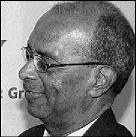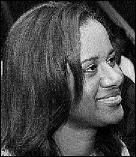Banks in 'wait-and-see' mode over rates
Published: Sunday | September 27, 2009


From left, Metcalfe ... FCIB think of rate cuts and Latibeaudiere ... says recent cuts triggered by market stability.
Under pressure from the Government, opposition politicians and vocal clients to slash lending rates in line with recent central bank cuts in benchmark rates, the island's commercial banks are for the most part adopting a wait-and-see attitude. Most were noncommittal in their responses to Sunday Business questions whether interest rate reductions are in the offing soon, although Bank of Nova Scotia (BNS) and National Commercial Bank (NCB), the island's two biggest financial institutions, say they are thinking about it.
response to the mounting pressure


From left, Powell ... argues Scotiabank did not hike rates to same extent as the BOJ and Sheree Martin ... says corporate rates are negotiated.
But it appears that even if they respond to the mounting pressure, it is consumer loans primarily, rather business borrowings, that are likely to get cheaper. For, NCB suggests, its business customers, who can bargain in the boardrooms, are already getting better rates than the current numbers in the public domain suggest.
"We are currently reviewing our base lending rate," NCB spokesperson Sheree Martin said this week. Its base lending rate is 21.75 per cent.
At the same time, she suggested that the bank was already responding to signals from the central bank having recently cut auto loan rate for new vehicles to 19.75.
Added Martin: "... We wish to point out that the majority of our loan portfolio is to the corporate segment and the rates on those loans are negotiated with the borrower. This means that when a corporate loan is being booked, the current interest rate environment is taken into account and the loan is priced accordingly. The rates on corporate loans recently booked will typically be lower than those booked, say, a year ago, when the interest rate environment was different."
Like his counterparts at NCB, Wayne Powell, executive vice-president from branch banking at BNS, hedged on immediate cuts.
"At this time, we cannot say there will be further cut by year-end." He insisted that Scotiabank was the first to respond positively to the BOJ's cue by slicing one percentage point off base lending rates in July.
The central bank has shaved 4.5 per cent off benchmark rates since July, the latest being last week when it clipped one percentage point of its six-month certificates of deposit (CD), bringing benchmark rate to 17 per cent.
"The adjustment to policy rates follows the better-than-expected inflation out-turn for August, which showed a further drop in the 12-month point-to-point inflation to 6.1 per cent from seven per cent in August," (BOJ) said then.
held strain
According to Powell, when the BOJ was its benchmark rates 10 percentage points to 24 per cent and demanding commercial banks park more of their cash with it, his bank held strain.
"When they went up, we increased our base rate by 2.3 per cent, which was a nominal amount compared to their increase," he said. "When they came down one per cent in July, we also came down by one per cent. It represented 50 per cent of the increase that we had put on."
And even when BNS rates were increased, it was not all their loans, Powell noted.
Our retail portfolio including Scotia plan loan was increased by two per cent only on new loans," he said.
That argument finds sympathy with financial analyst John Jackson.
"When you are faced with the situation like that, you are likely, in my view, to be a little bit more cautious in how you adjust rates because you may need to have some cushion in case of things deteriorating," Jackson said.
Moreover, said Jackson, big banks like BNS and NCB "have a large pool of their own funds" at stake on which they earn less money.
Additionally, Jackson argued, the sharp reduction in the benchmark rates over a short time span "may have created a level of uncertainty".
"It has also come at a time when demand for foreign exchange is higher than the expected flow," he said. "It is a period when the banks may consider it more prudent to be cautious than to adjust the rates."
Indeed, before the latest rate cut last week, on July 24, the BOJ, having previously removed its longer tenor one-year instruments from the market, cut the benchmark 180-day CD by one percentage point to 20.5 per cent, then followed a week later with another 1.5 percentage point reduction,
On August 20, another point was sliced from the rates before yesterday's movement. But even that seeming aggressiveness on the part of the central bank, argued Powell, leaves rates still well ahead of where they were less than a year ago.
"The 41/2 per cent that they have now reached is just about 50 per cent of where they (the BOJ) were in the beginning," he told Sunday Business, comparing the reductions with earlier hikes by the central bank.
NCB and BNS are not the only commercial banks declaring they have been responding to the BOJ signals by reducing their lending rates. Clovis Metcalfe, the FirstCaribbean Jamaica boss, has also pointed to his bank's reduction of auto and general purpose loans.
"We are in the process of lowering prime lending rates," he said of the June rate reduction by his bank.
First Global Bank is, however, making no claim to have cut rates recently on any of its loan products.
Rates subject to change
"Rates are subject to change and will vary depending on various terms and conditions pertaining to the respective loan being offered," the bank said in a vague response to Sunday Business queries.
"First Global is not the only bank pointing to the variable rate policy to explain their current interest-rate policy.
"Our consumer loan and credit card products all have varying interest rates, some of which are not affected by movements in our base lending rate," NCB's Martin, the senior assistance general manager for marketing and communications, said.
"But the NCB representative appears more sensitive to public sentiments over the banks' refusal to cut rates at a faster clip.
"NCB supports an interest rate environment that facilitates vibrant business and consumer activity - it makes sense for our customers and it makes sense for us. Lower rates on loans will always be favoured, since the ability to access credit is likely to be easier; however, there are several macroeconomic and other factors that must be taken into account when pricing loans," Martin said.
expect the lobbyist
In the meantime, the banks can expect the lobbyist for rate cuts, such Jamaica Manufacturers' Association President Omar Azan, will continue to be vocal.
"Internationally, the banks are averaging three per cent," he complained. "Ours are averaging 14 per cent. The banks need to offer money at lower rates. Bankers need to get out and be bankers, not paper traders."















